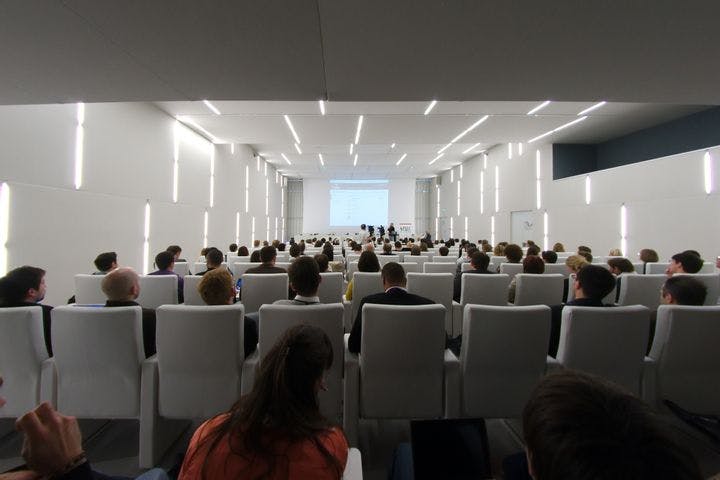Fall 2007
Meet and Spend
– The Wilson Quarterly
Off-site meetings for sales staff and other groups are a vast and largely untracked area of business expense. Are they worth it? You probably already know the answer.
The 2002 Sarbanes-Oxley accounting reform act isn't winning any popularity contests in America’s executive suites, but it might prompt a hallelujah from the cubicles if it sheds light on one of the darkest corners of modern business: the meeting.
The legislation, passed in the aftermath of the Enron scandal and other corporate iniquities to require greater financial disclosure, is forcing company boards to demand justification for “long-unexamined expenditures—very much including meetings,” writes John Buchanan, a Georgia journalist and author.
Off-site meetings for sales staff and other groups are a vast and largely untracked area of business expense. For instance, pharmaceutical giant Pfizer was surprised to learn that it was spending as much as $1 billion annually on meetings, not including airfare—twice its estimate.
Meetings in hotels, conference centers, restaurants, and other venues for fewer than 50 people cost corporate America more than $8 billion every year, according to a recent estimate. Large as that sum may seem, one business travel researcher thinks that it represents only about 10 percent of the cost of all off-site corporate gatherings.
Traditionally, industry’s meeting planners have been administrative assistants and others who book rooms and flights, decide between surf and turf and chicken for the banquet, and call up the speaker’s bureau for the keynote address. Their expenditures could be buried in a host of budgets—marketing, sales, advertising, promotion, or human relations. Meeting planning has been an entrenched, secretive world, Buchanan says. And it is highly resistant to change. The vast majority of CEOs, according to a study, are still clueless about what their companies spend on business powwows.
While there is a trend toward holding virtual gatherings as a way to cut down on the number of people who have to be flown to meetings, housed, and fed, fewer than a third of all meeting planners told researchers they would position themselves as the go-to person for videoconferencing or webcasting. Despite a host of new technologies available to help them, the old hands had scant interest in trying out new ways of matching attendees with relevant courses, vendors, and peers, or facilitating networking or sharing conference content.
Now, cost-conscious companies have reined in the planners, establishing “strategic meeting management programs,” which expose meeting staff to an unprecedented level of scrutiny. It’s “a brutal form of accelerated evolution,” Buchanan says, that may well lead to the extinction of the traditional logistical planner. No longer judged on the quality of the rooms and the wittiness of the speaker, meeting organizers are now evaluated on how good they are at “addressing the underlying business objectives of meetings, then assessing their effectiveness.” That’s the overarching issue, Buchanan concludes: Are most meetings really necessary? Down in the cubicles, the minions think they already know the answer.
The Source: "Meetings: The Biggest Money Pit of Them All" by John Buchanan, in The Conference Board Review, September-October 2007.
Photo courtesy of Flickr/Frederic Bisson
